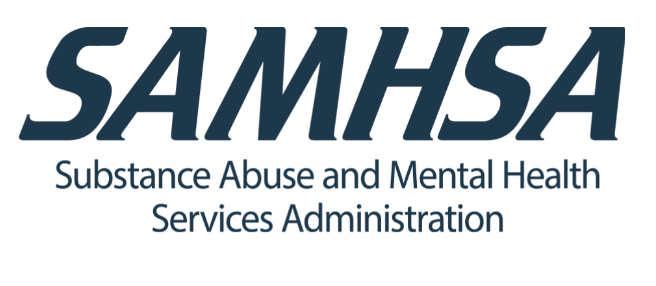How Long Does Suboxone Stay in Your System?

Suboxone is a prescription drug comprising buprenorphine and naloxone that is used to treat opioid addiction and dependency. This is done through assistance from licensed medical practitioners, and it has been proven to reduce the likelihood of lethal overdoses greatly. Buprenorphine acts as a partial opioid agonist, while naloxone as an opioid antagonist that inhibits opiate effects such as pain.
Suboxone functions by inhibiting the exact brain receptors like other opioids, for instance, morphine and heroin. Buprenorphine binds to the brain receptors and has a long-acting effect, which reduces intoxication by preventing drug cravings and thereby decrease opioid withdrawal symptoms.
Can Suboxone Be Detected in a Drug Test?
Most individuals who use Suboxone worry about the duration it remains active in their body system. Suboxone traces can be found in one’s body on a urine test for a week or more while on a blood test, it can be traced for a day.
Metabolization Of Suboxone
Naloxone has a fast-acting effect due to its short half-life ranging from half an hour to one hour. This is why its often considered as an opioid overdose treatment drug in medical emergencies. However, it’s only for a shorter duration because after it’s flushed out of one’s body, the overdose symptoms may start as the remaining opioids in one’s brain bind to the receptors.
Contrarily, buprenorphine has a relatively long half-life than other opioids. The half-life of a drug is simply the time taken for the drug concentration to decrease by half in one’s body. Buprenorphine’s half-life is 36 hours, and it can take a week or more for Suboxone to be no longer traceable in one’s body.
The metabolization of Suboxone generates metabolites in the liver, and they can stay in one’s body relatively longer than the opioid. Buprenorphine metabolites can stay in one’s body for as long as a month. Several factors determine the rate at which Suboxone flushes out of a person’s body. They are;
- Height and weight of a person
- The metabolism rate of one’s body
- The health of the liver
- Amount of the last dosage
- Body fat composition
- Duration of the drug abuse
Medical practitioners decide the interlude that individuals should have their prescribed drugs. If the doctor sees that there is a necessity to keep up with the drug level in the body, then he/she may recommend taking the drug before the last dosage leaves the body system. The new dose intake will be actively present in one’s bloodstream, and by the time half of the previous dosage is flushed out of the system, the new dose will be absorbed, thereby achieving effectiveness. It is also advisable to take the drug at the same time daily at the same intervals as prescribed.

On the other hand, short-acting drugs have a shorter half-life. This means that they are activated shortly after being taken, and their healing strength is higher soon after being ingested. After several hours, the effects weaken in one’s body, and if need be, doctors can recommend using the drug several times daily to control the required amount in the body system.
Can Suboxone Be Abused?
Suboxone’s popularity is on the rise in the United States, and cases of misuse and abuse have been reported too. In the past decade, the number of emergency hospital visits due to buprenorphine abuse rose rapidly. Buprenorphine dose intake that surpasses the naloxone component in Suboxone is equivalent to low dose morphine or heroin and can trigger a slight feeling of intoxication.
Suboxone’s withdrawal tends to be quite long due to the long-acting buprenorphine effect. The majority of the intense withdrawal symptoms take a week, but withdrawal may exert influence on an individual for two weeks to a month. Withdrawal from Suboxone requires help from a professional because it’s used to treat opiate addiction. This denotes that the individual may have a substance abuse past hence the need to consider professional help to avoid suboxone side effects.
Get the Best Treatment for Suboxone Withdrawal: Novo Detox Center
Several reputable associations fully accredit Novo Detox Center as a drug and alcohol treatment center in the United States. It is located in Los Angeles, California, and offers residential detox programs to clients. We are specialized in treating various addictions such as heroin detox treatment, alcohol detox treatment, opiate detox treatment, prescription drugs detox treatment, and co-occurring disorders.

Each individual has different needs, and the length of their stay varies from a month to three months. Our medical director works closely with each person to give a specialized treatment plan while our clinical team works to point out underlying issues for effective treatment. Our luxurious environment and care provide a comfortable setting for individuals as they acquire treatment in our facility.
We focus on keeping you comfortable and treating your withdrawal symptoms quickly as you begin your recovery journey. Our medical team monitors your progress closely as you progress and implements changes to your personalized treatment plan when the need arises. You can as well communicate with your friends and family during your stay for emotional support, which is essential for your recovery.
Visit our detox center to get assessed and begin your recovery journey as soon as possible. You can contact us to plan on your treatment program with our facility.
Conclusion
Suboxone being an opiate, is prone to abuse and misuse among individuals. Suboxone is addictive, and continued use can cause drug dependency. Withdrawal from Suboxone use can cause unpleasant withdrawal symptoms if there is the presence of other opioids in the body system.
Like other opioids, Suboxone treatment requires a plan depending on the personal needs of an individual. Detox is usually the first step whereby the drug is tapered off until one’s body is no longer dependent on it. The next step is usually therapy and counseling sessions and, finally, a 12-step program consisting of peer support groups.
Addiction and drug dependency can affect anyone from all walks of life, but the good thing is that it can be treated like other diseases. It all starts with an Individual deciding to live a drug-free life by seeking help from a drug treatment center. Seeking a life of sobriety is a choice to make, and the earlier the decision is made, the better.




